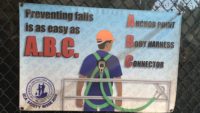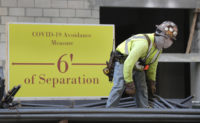The first part of this two-part series introduced the ideas in the human and organizational performance approach to safety and some of the obstacles to using it in construction.
While most recent thinking on safety is based on ideas generally known as human and organizational performance—where it is assumed workers will make errors and the emphasis is on the work environment and processes to prevent severe injuries—real problems stand in the way of making it work. Federal safety regulators are one of the obstacles. Contractual terms pose another.
There are solutions that employers can try that may make the transition easier.
Under the traditional approach, employees who violate safety rules are automatically subject to discipline scaled to the severity of the violation. But the disciplinary action may inhibit those same workers from openly and honestly talking about the safety incidents or violations that occur, and why they broke the rules and thought that would be okay.
As we know, the U.S. Occupational Safety and Health Administration focuses on safety citations and penalties against employers. When cited, employers often defend themselves by arguing that the violation was the result of unpreventable employee misconduct.
To contest proposed OSHA penalties, employers must prove that they have established work rules designed to prevent the violation, adequately communicated these rules and took steps to discover whether violations and rules were effectively enforced.
In prior cases, OSHA’s Occupational Safety and Health Commission, which makes final rulings on contested citations, has made clear what employers must do to avoid all or part of the penalty. Employers must prove they had established work rules designed to prevent the violation, adequately communicated these rules and took steps to discover whether violations and rules were effectively enforced.
The commission considers whether discipline imposed on any staff member is “sufficient” and consistently enforced. Evidence of a progressive disciplinary system, where the seriousness of the employer's discipline matches that of the violation, may be admitted to support the employer's affirmative defense. By its very nature, a human and organizational performance program is incompatible with a defense of unpreventable employee misconduct.
 Jeremy Presnal
Jeremy Presnal Another inhibiting aspect of OSHA’s policy is OSHA's 20-year-old Voluntary Protection Program (VPP), which allows participating employers to be removed from OSHA’s general inspection list. While those employers may still be cited in the event of a serious incident, or after an inspection resulting from an employee’s complaint, employers need not otherwise worry about a surprise visit from OSHA.
To participate in the program, an employer must maintain its injury and illness rates below a certain level and must also demonstrate that it operates a comprehensive safety and health management system that includes management leadership and employee involvement, worksite analysis, hazard prevention and control, and safety and health training. Under the hazard prevention and control element of OSHA’s VPP policies, employers must demonstrate that their program is “enforced through a clearly communicated, written disciplinary system that includes procedures for disciplinary action or reorientation of managers, supervisors and non-supervisory employees who break or disregard” safety rules, safe work practices, proper materials handling or emergency procedures.
 Travis Livermore
Travis Livermore
While VPP protocol calls for disciplinary systems “designed to ensure that employees are not discouraged from reporting,” the prospect of actually crafting such a balance in our estimate appears tenuous.
The construction project's owner or client poses still another possible obstacle, but the safety terms may be negotiable.
Clients want to know most of all that incidents will be prevented and that careless employees will not be present on their jobsites.
For employers who want to apply human and organizational performance ideas, one option would be to add the following line at the end of the contract section requiring progressive discipline: “Nothing in the aforementioned will preclude Contractor [or Subcontractor] from taking disciplinary action off the table if it reasonably believes that more and/or better learnings will be gleaned by doing so.”
If the client won’t agree to those terms, the contractor or subcontractor may reserve the right to move a particular employee to another location rather than simply terminate that worker.
Not All Discipline is Precluded
Importantly, human and organizational approaches don’t preclude all discipline if employees agree to routinely conduct self-assessments and explain to supervisors how they will improve. And employers may choose to take discipline off the table where employees voluntarily disclose their own noncompliance.
Remember, the idea is that discipline chills honest discussion of why safety incidents or violations occur.
Companies that take these steps, though they are just small ones, will begin balancing their current approach to safety issues with bits and pieces of the new ideas. We believe the workplace will be safer if they do.






